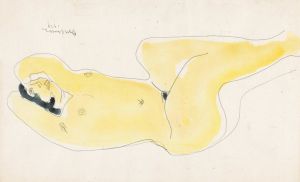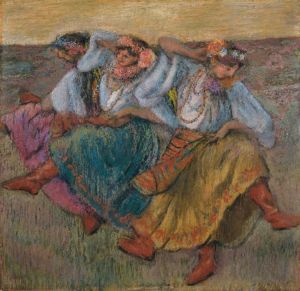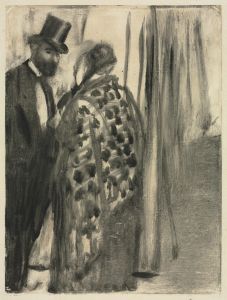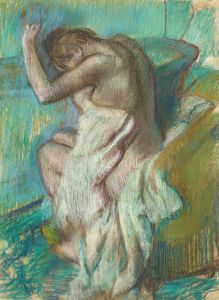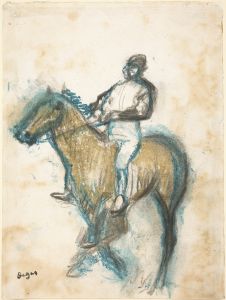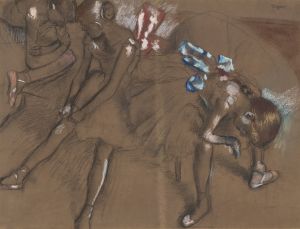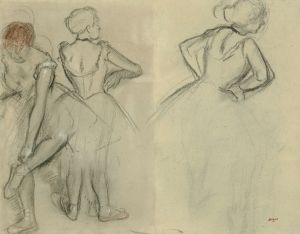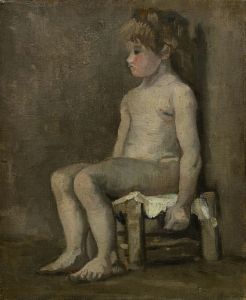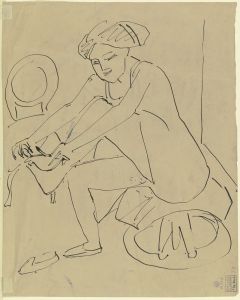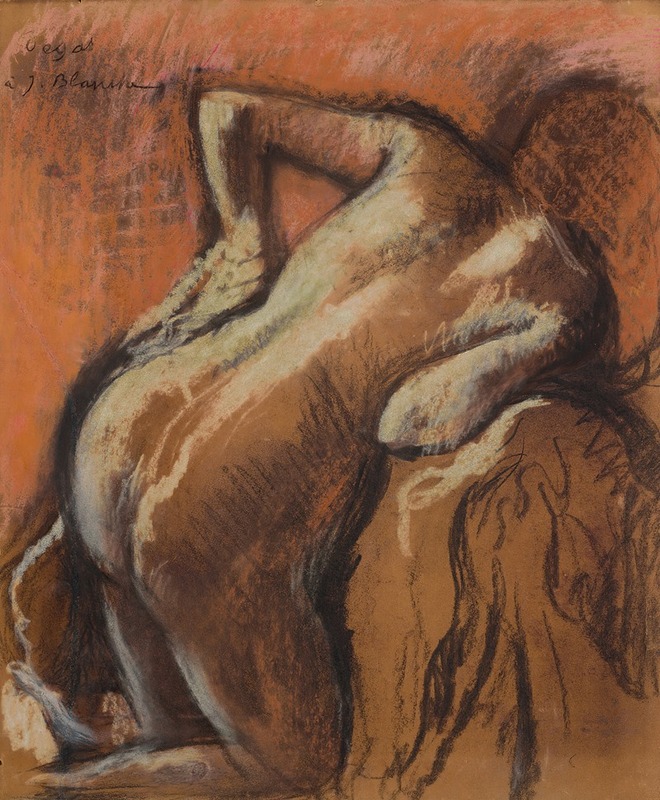
Après le bain, femme s’essuyant
A hand-painted replica of Edgar Degas’s masterpiece Après le bain, femme s’essuyant, meticulously crafted by professional artists to capture the true essence of the original. Each piece is created with museum-quality canvas and rare mineral pigments, carefully painted by experienced artists with delicate brushstrokes and rich, layered colors to perfectly recreate the texture of the original artwork. Unlike machine-printed reproductions, this hand-painted version brings the painting to life, infused with the artist’s emotions and skill in every stroke. Whether for personal collection or home decoration, it instantly elevates the artistic atmosphere of any space.
"Après le bain, femme s’essuyant" (After the Bath, Woman Drying Herself) is a notable pastel drawing by the French artist Edgar Degas, created circa 1890-1895. Degas, a prominent figure in the Impressionist movement, is renowned for his depictions of contemporary life in Paris, particularly his portrayals of dancers, women at their toilette, and scenes of everyday activities.
This artwork features a woman drying herself after a bath, a subject that Degas explored in numerous works. The composition captures an intimate moment, emphasizing the natural and unposed state of the figure. The woman is depicted from behind, her body slightly twisted as she reaches to dry her neck with a towel. This perspective allows Degas to focus on the contours and movement of the human form, a hallmark of his interest in the dynamics of the body.
Degas's use of pastel in "Après le bain, femme s’essuyant" is particularly noteworthy. Pastel, a medium he increasingly favored in his later years, allowed for a rich interplay of color and texture. The soft, powdery quality of pastel enabled Degas to create delicate transitions of light and shadow, enhancing the sense of volume and the tactile quality of the skin. The background is rendered in loose, expressive strokes, which contrast with the more detailed treatment of the figure, drawing the viewer's attention to the central subject.
The choice of subject matter reflects Degas's fascination with the private, unguarded moments of women's lives. Unlike the more public and performative scenes of ballet dancers, these intimate depictions offer a glimpse into the personal and routine aspects of daily life. Degas's approach to these scenes is both observational and empathetic, capturing the natural grace and beauty of the human body without idealization.
"Après le bain, femme s’essuyant" is part of a series of works where Degas explored the theme of women bathing and drying themselves. These works are characterized by their candid realism and the artist's keen observation of the human form. Degas often used models for these studies, meticulously observing their movements and postures to achieve a high degree of naturalism.
The artwork is housed in the collection of the Musée d'Orsay in Paris, which holds one of the most comprehensive collections of Degas's works. The museum's collection provides valuable insight into the breadth of Degas's artistic practice, from his early works to his later experiments with pastel and sculpture.
Degas's "Après le bain, femme s’essuyant" exemplifies his mastery of pastel and his innovative approach to composition and subject matter. The drawing remains a significant example of his contribution to the Impressionist movement and his enduring influence on the depiction of modern life.





